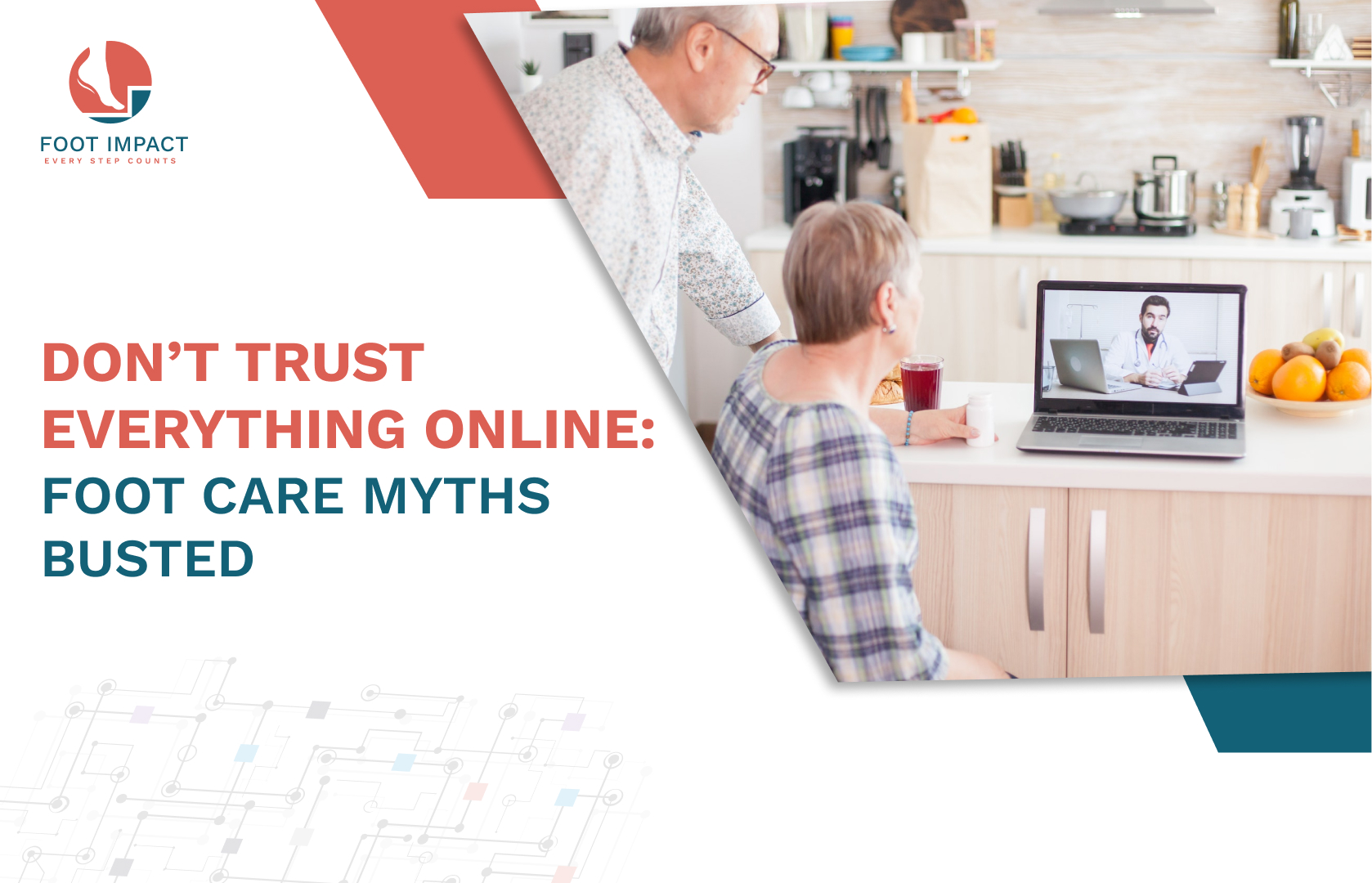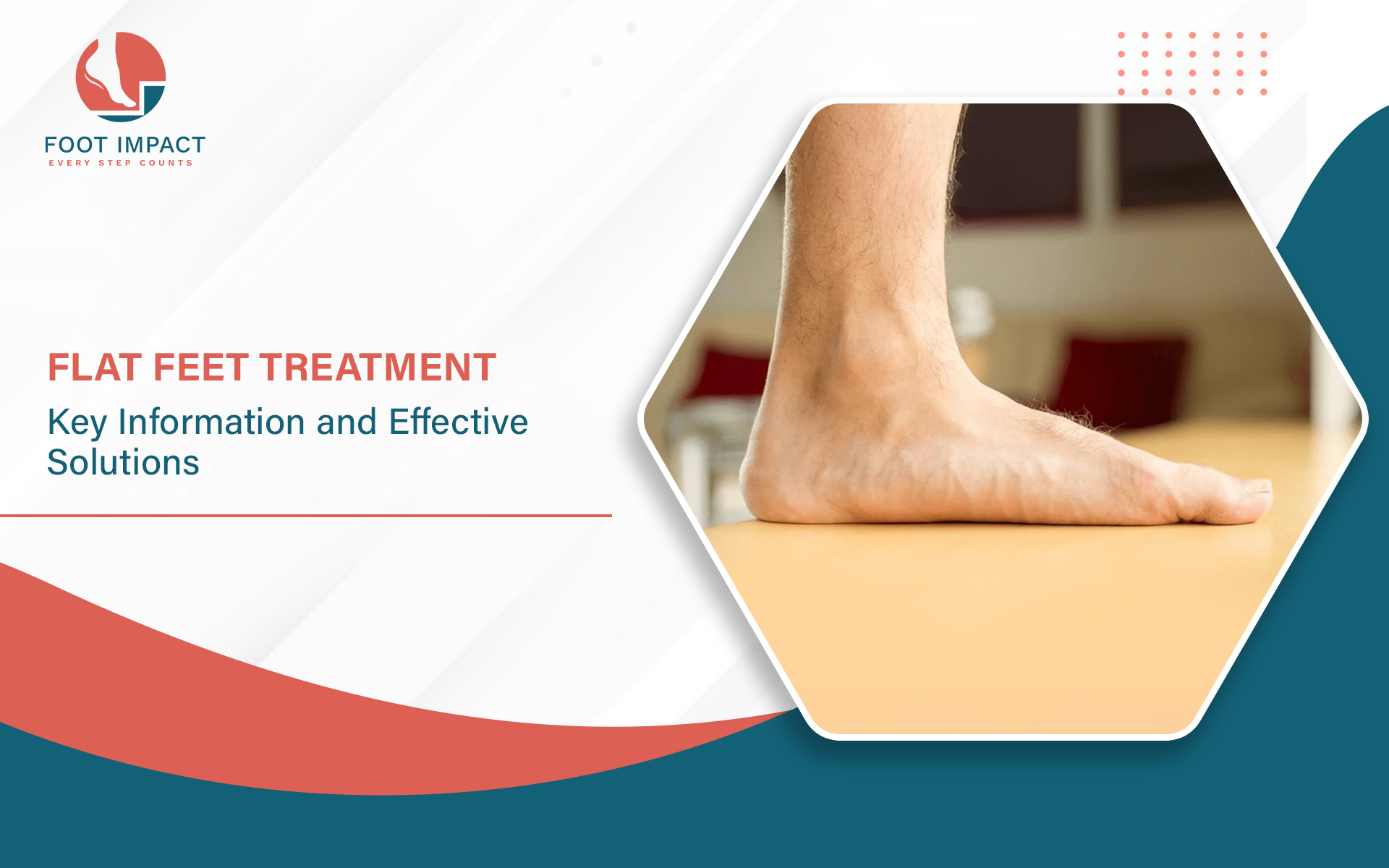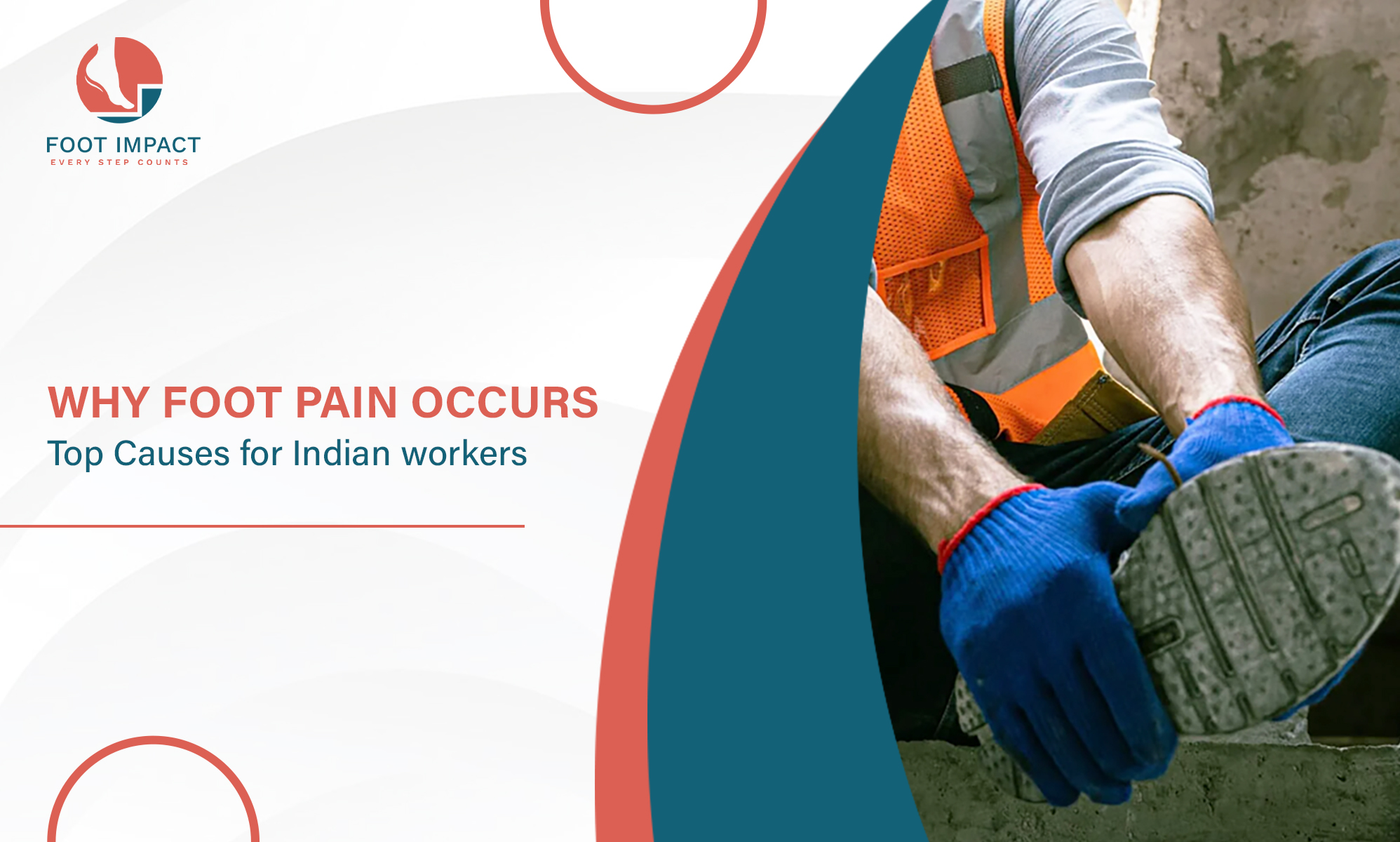Don’t Trust Everything Online: Foot Myths Busted
Think you know foot care? You might be wrong.
From family advice to viral social media tips, a lot of what we hear about foot health simply isn’t true. In India, where traditional remedies and DIY solutions are common, it’s easy to get swept up in misleading practices. But your feet deserve better—especially when poor foot care can lead to long-term pain, infections, or even amputations in serious cases.
Let’s bust some of the most common foot care myths and give you expert-backed tips that actually work.
Myth #1: Walking Barefoot or in Flip-Flops Is Good for Foot Health
Daily, many Indian homes and temples observe the custom of walking barefoot. But when done on hot tiles, rough surfaces, or outside, it can lead to injuries, infections, and burns—especially for people with diabetes.
And those stylish flat flip-flops? They offer zero arch support and increase your risk of foot pain, cracked heels, and sprains.
Reality: Your feet need cushioning and protection. Invest in sandals or shoes with soft soles and good arch support. If you walk a lot or have a health condition, proper footwear isn’t optional—it’s essential.
✅ Looking for orthotic footwear or pain-relief insoles? Explore premium options at FootImpact.in
Myth #2: Only Tight Shoes Cause Bunions
Many people blame bunions (those bony bumps near the big toe) on tight shoes or heels. But the truth is, bunions are mostly hereditary—passed down in families. Shoes can make them worse but don’t cause them.
Reality: If you're prone to bunions, wearing wide, soft shoes with plenty of toe space can prevent pain. For advanced cases, you might need medical correction. Early diagnosis is key.
Myth #3: You Don’t Need Sunscreen on Your Feet
Do you apply sunscreen on your feet before heading to the beach or out in the sun? Most people forget—and it’s a big mistake. The skin on your feet is just as vulnerable to sun damage and skin cancer.
Reality: Always apply SPF on your feet, especially if you're wearing sandals or slippers. Prevention is better than dealing with painful burns or long-term skin damage.
Myth #4: Corns and Calluses Have Roots You Can Dig Out
This is a dangerous one. People often believe that corns and calluses have roots that must be dug out with blades, razors, or acids.
Reality: Corns are just thick skin caused by pressure—not plants. Digging them out at home can lead to cuts, infections, or even ulcers.
Use cushioning pads, wear proper footwear, and visit a podiatrist if it doesn’t improve. Never self-treat with blades or harsh chemicals.
Myth #5: Warts and Athlete’s Foot Are Harmless
“Just a small rash.” “It will go away on its own.” Sound familiar? Many ignore fungal infections and warts, not realizing they are highly contagious.
Reality: These issues spread fast in shared spaces like public showers, gyms, and swimming pools. Treat them early with antifungal creams and always keep your feet clean and dry.
Pro Tip: Use open slippers in public showers and change socks daily.
Myth #6: Foot Pain Is Normal, Especially as You Age
Sore feet after a long day? Fine. But persistent pain, tingling, or numbness? That’s not normal—even if you're older or diabetic.
Reality: Ignoring ongoing pain can delay diagnosis of serious issues like plantar fasciitis, neuropathy, or tendon problems. For diabetics, foot pain—or lack of it—can mean nerve damage, which increases the risk of infections and even amputations.
Don’t wait. If foot pain lasts more than a few days, see a foot specialist.
Book a professional foot check or explore expert advice at FootImpact.in
Myth #7: Home Remedies Can Cure Every Foot Problem
From garlic pastes to turmeric soaks, home remedies are deeply rooted in Indian culture. While some may relieve mild symptoms, they are not cures.
Placing onions on the feet won’t treat a cold. Neem water may feel refreshing but won’t cure a fungal infection. Strong DIY chemical soaks can even burn your skin.
Reality: For anything more than dryness or fatigue, consult a doctor. Use home care only as support—not your main treatment.
Expert Tips to Keep Your Feet Healthy
Want strong, pain-free feet? Here’s what the experts actually recommend:
🧼 Wash and Dry Every Day
Use warm water and mild soap. Gently dry between your toes to prevent fungal growth.
🧴 Moisturize the Right Way
Apply foot cream or petroleum jelly to heels and soles. Do not apply between the toes, as this can increase the risk of infection.
✂️ Cut Nails Properly
Trim nails straight across. Avoid cutting too short or rounding the edges, as this can lead to ingrown nails.
👟 Choose the Right Footwear
Support matters. Choose footwear that offers proper arch support, ample toe space, and cushioned soles.
🧦 Always Wear Socks
Choose cotton or moisture-wicking socks. Change daily, and never wear damp ones.
🔍 Do Regular Foot Checks
Look for cuts, swelling, redness, or color changes. Use a mirror to check soles. Diabetics should have annual foot exams.
💪 Stretch and Exercise Your Feet
Simple toe stretches, rolling a tennis ball, or calf stretches improve circulation and relieve tension.
🚫 Say No to Self-Surgery
No razors, no blades, no poking. If you spot a corn, wart, or thick skin, consult a professional.
Final Thoughts: Your Feet Deserve Facts, Not Myths
Feet are the most used—and most neglected—part of our body. They carry you through every walk, workout, or wedding. Why risk them for the sake of viral misinformation or DIY myths?
✅ Be smart.
✅ Invest in proper care.
✅ Get expert help when needed.
For reliable foot care tips, pain relief solutions, and doctor-recommended products, visit FootImpact.in — your trusted foot health partner.



